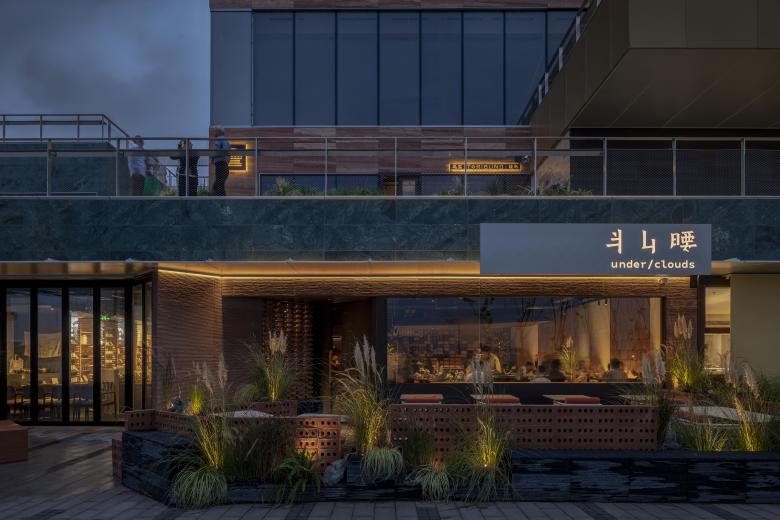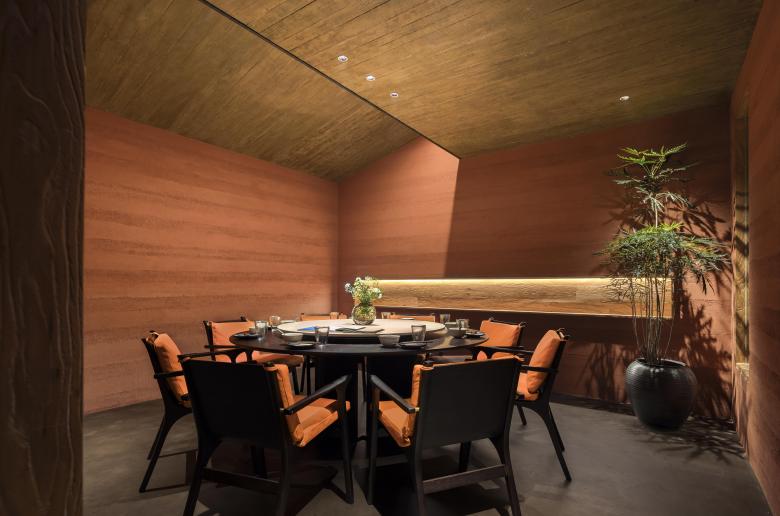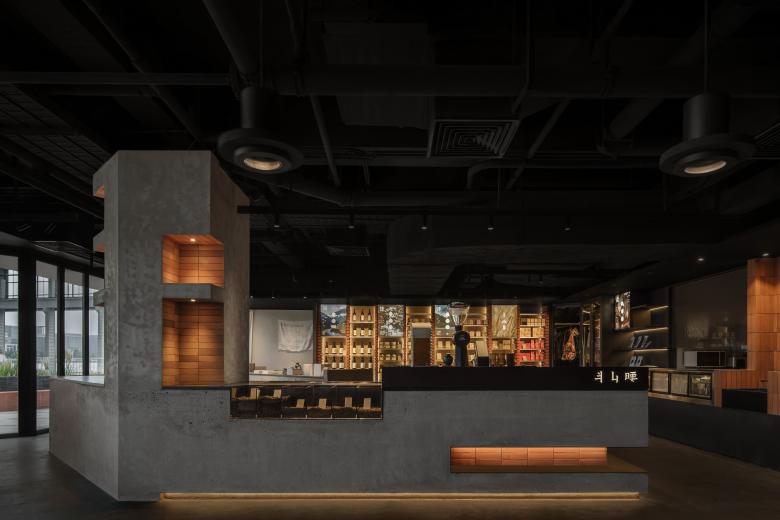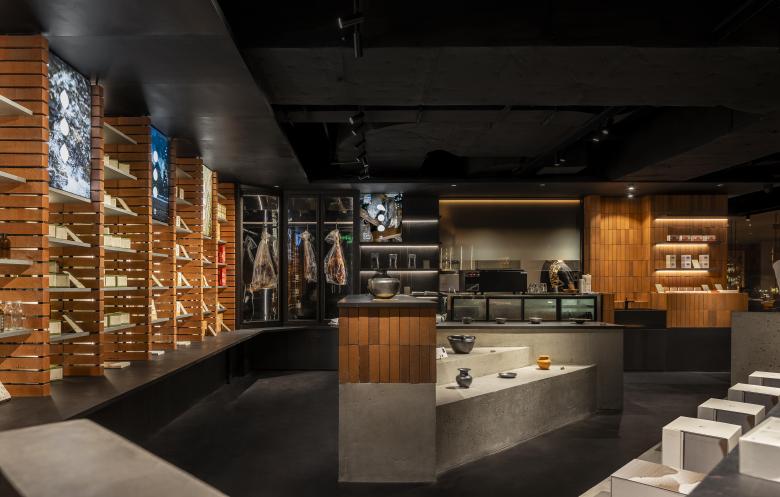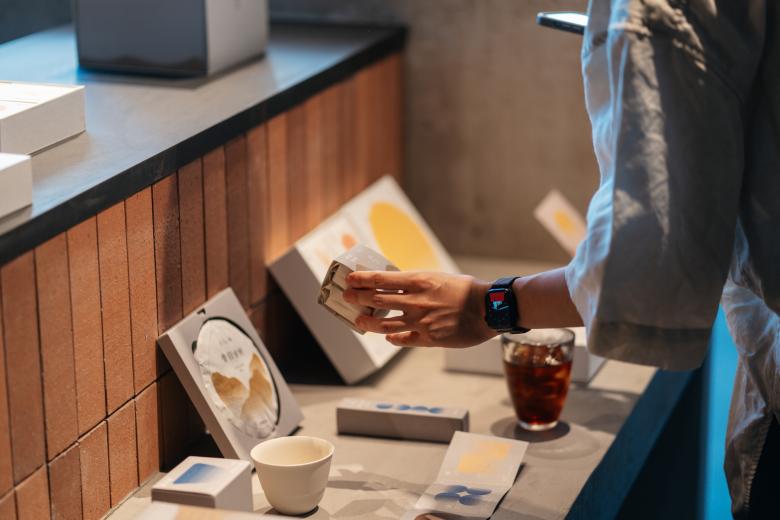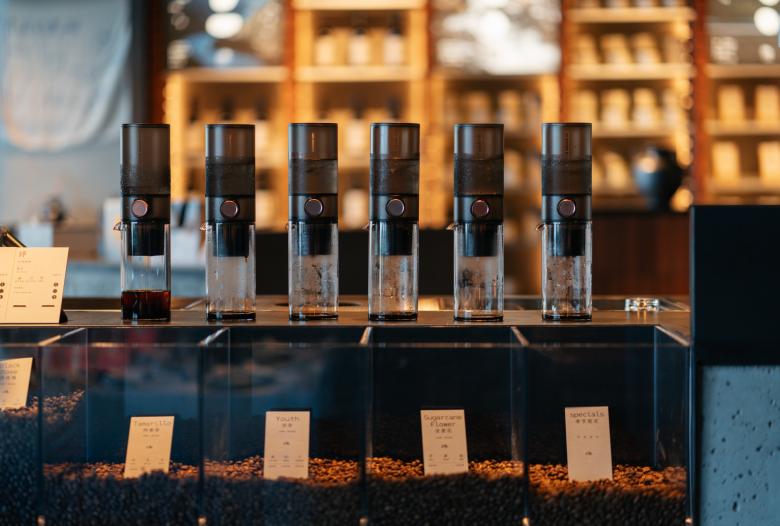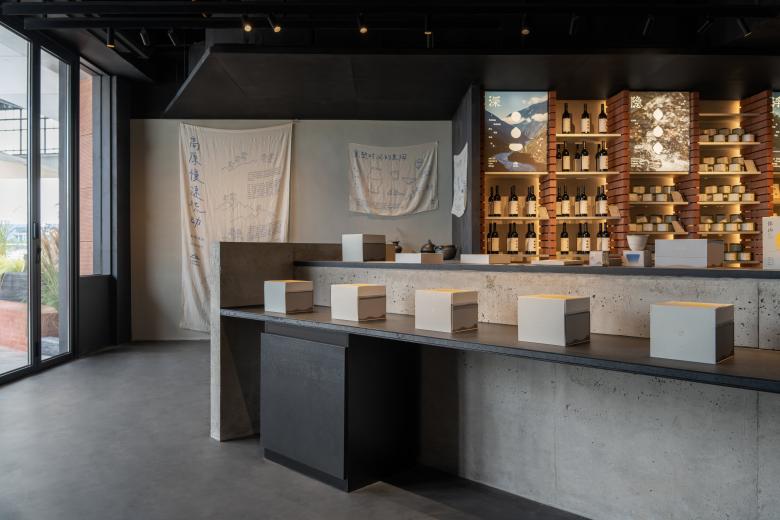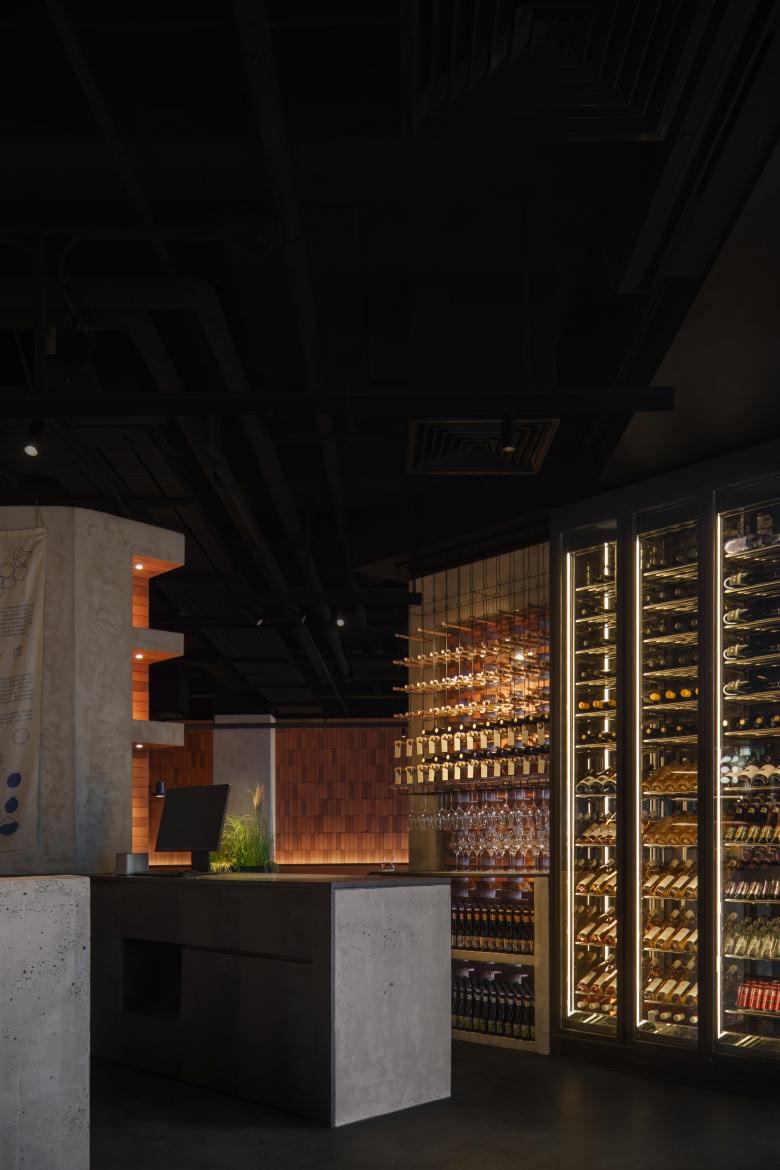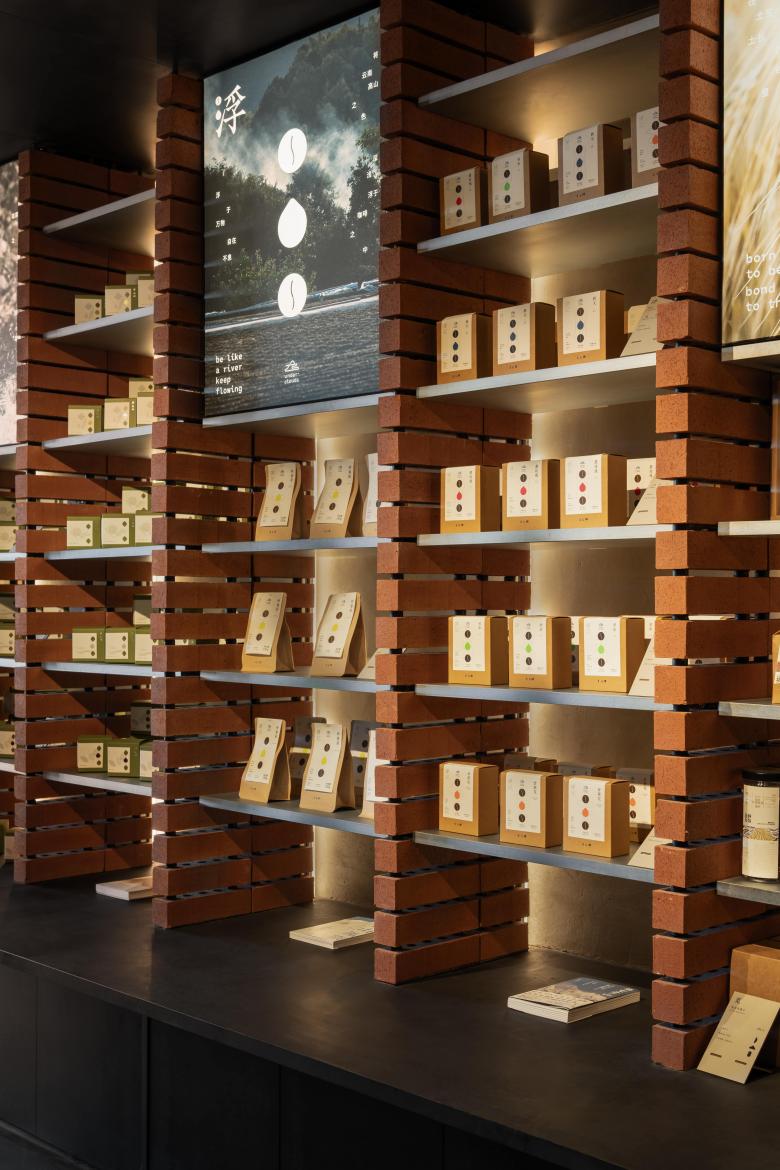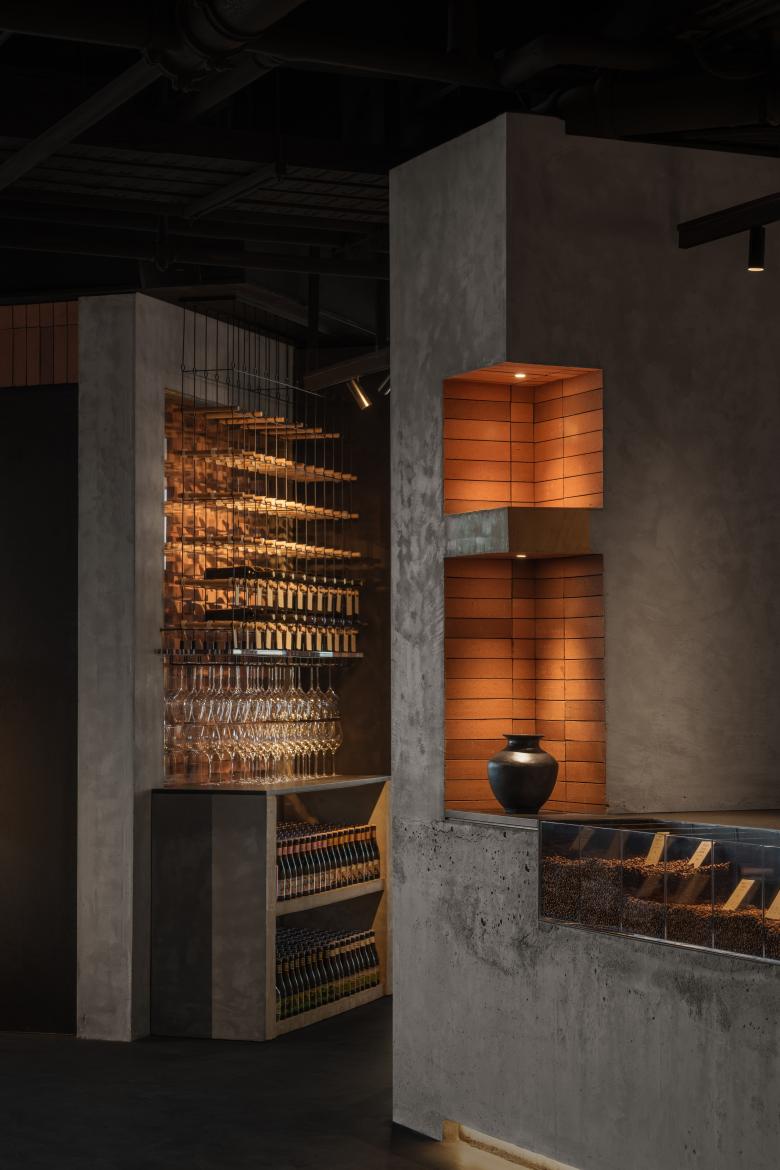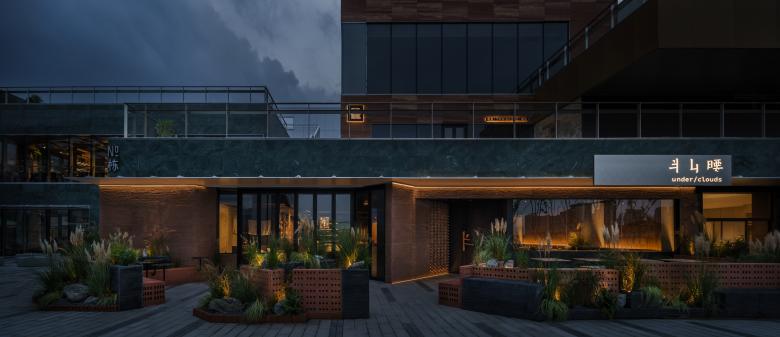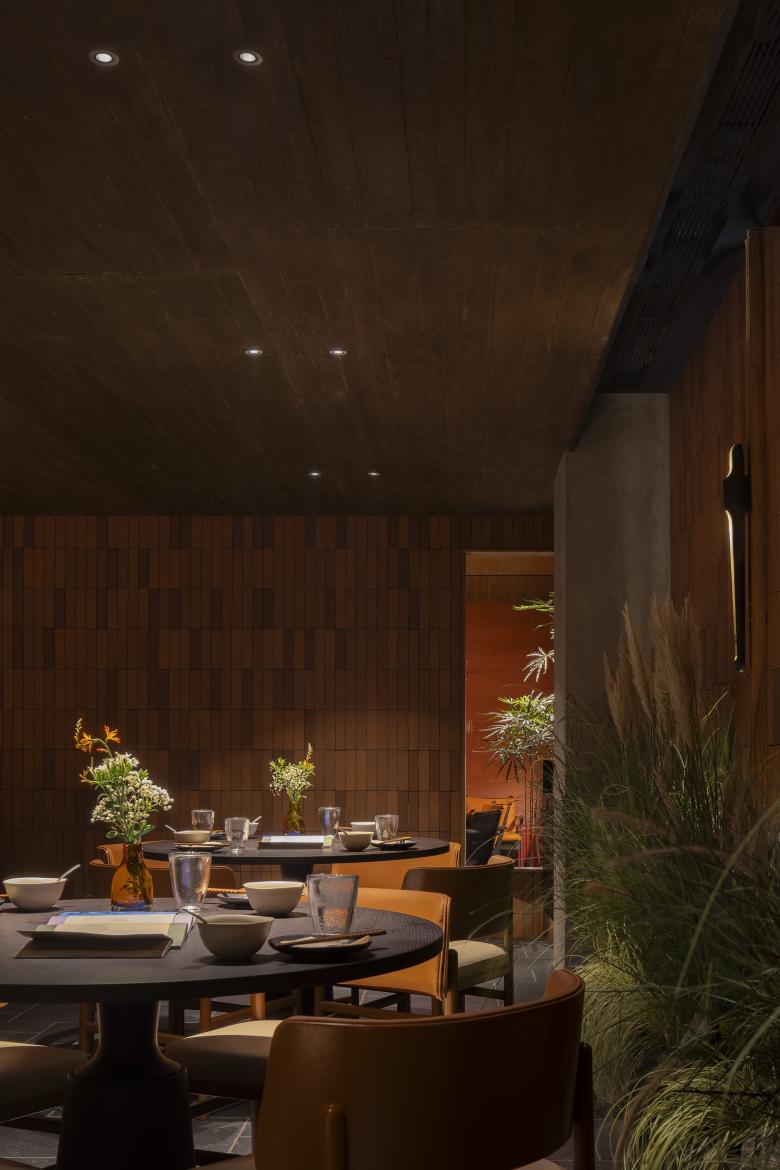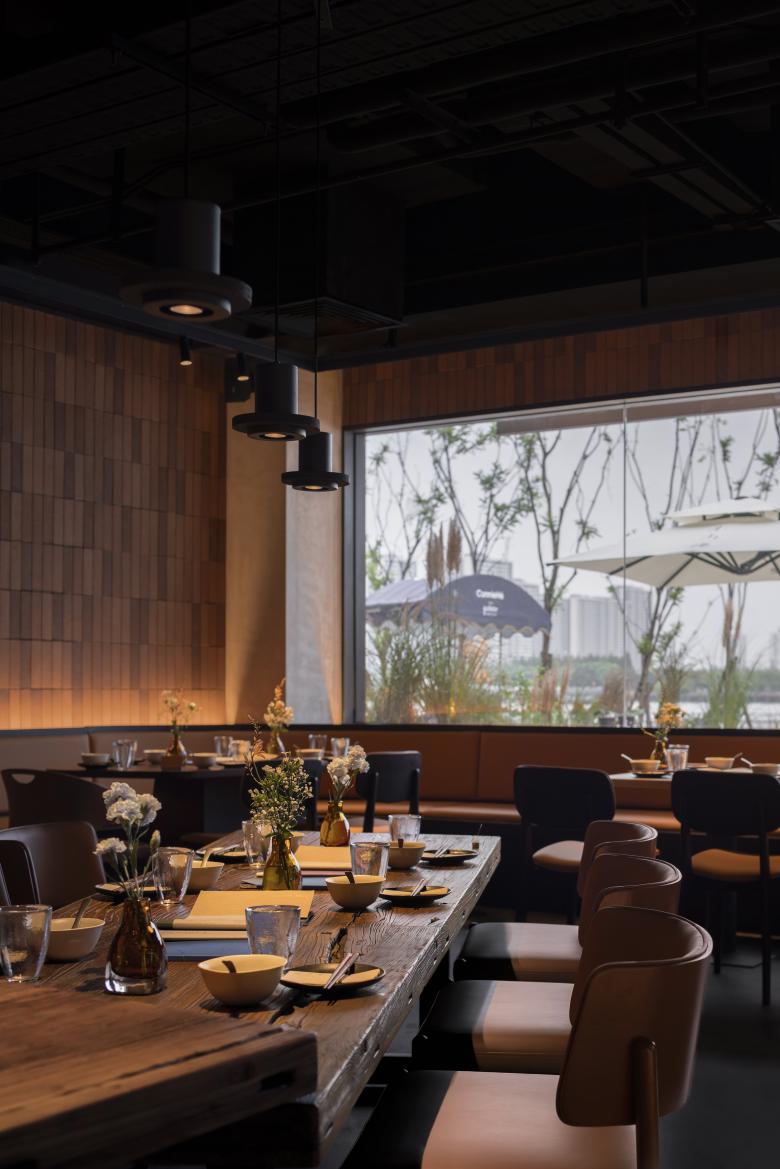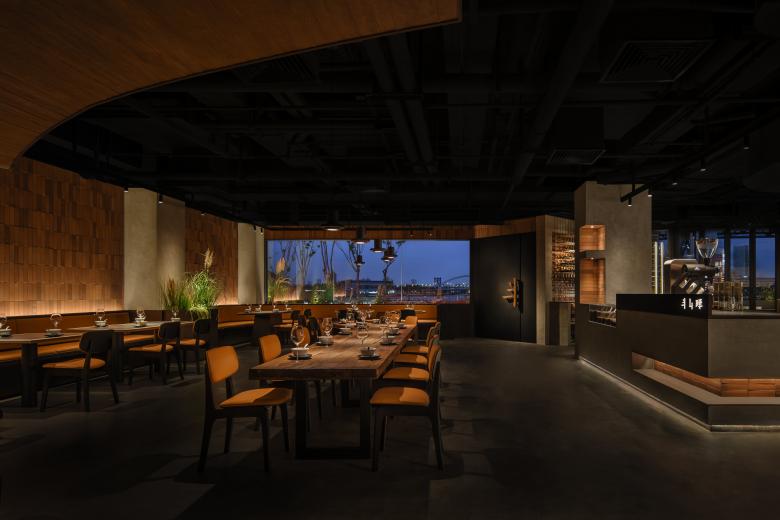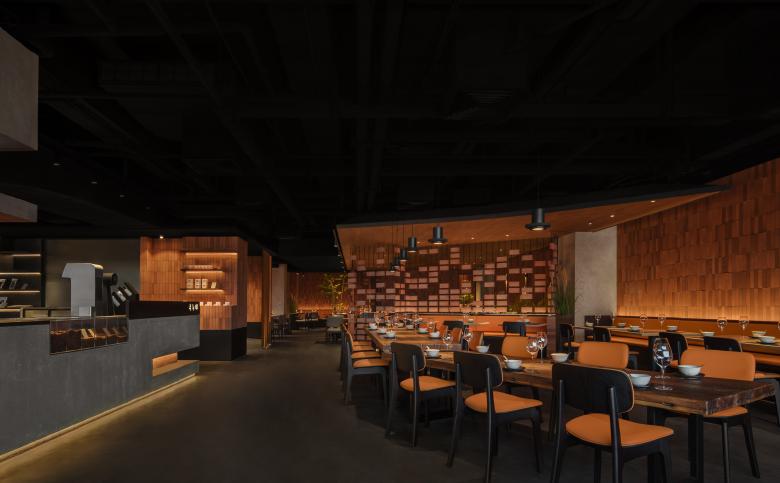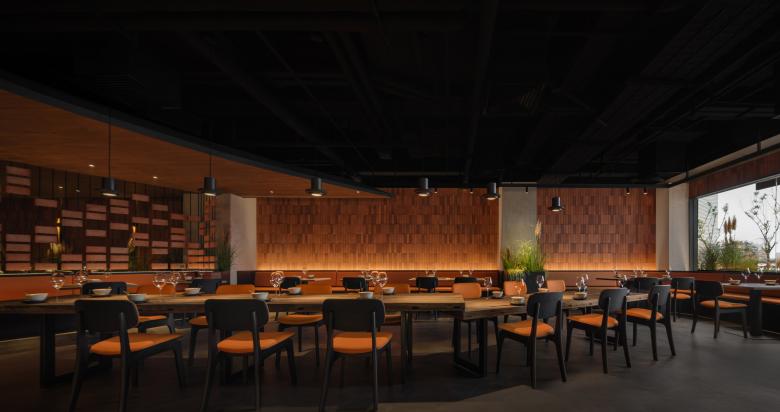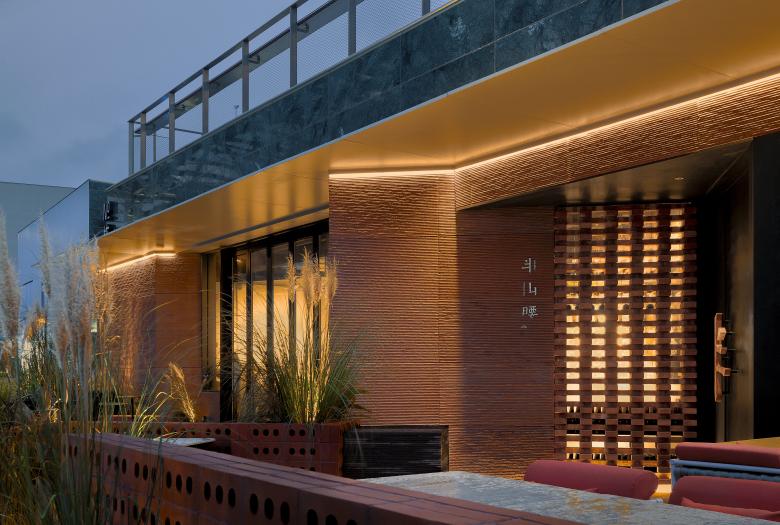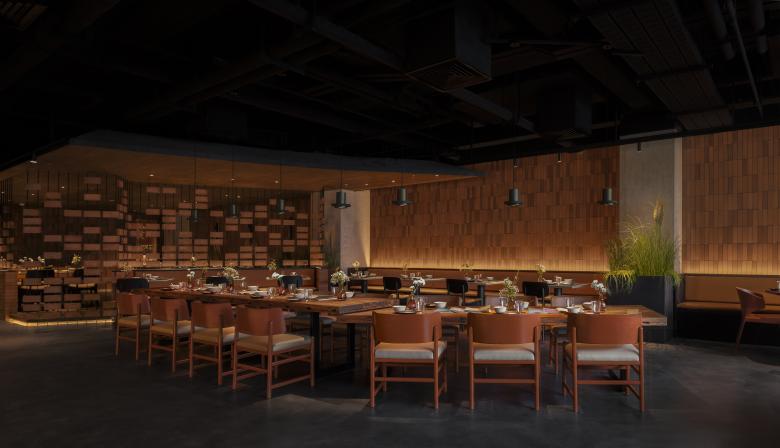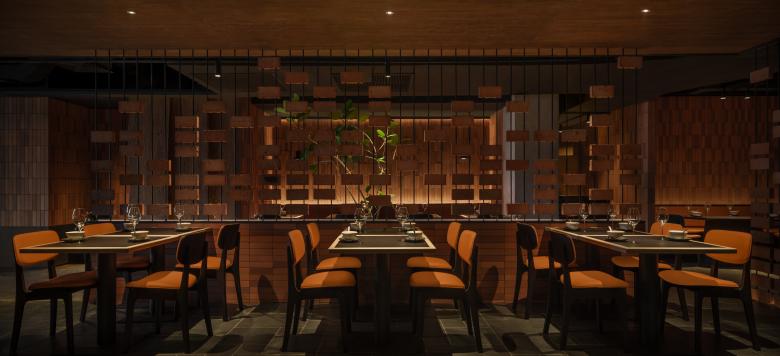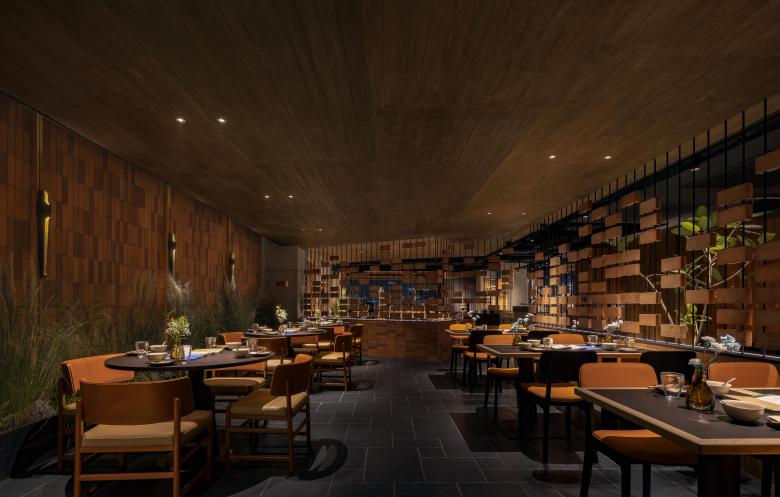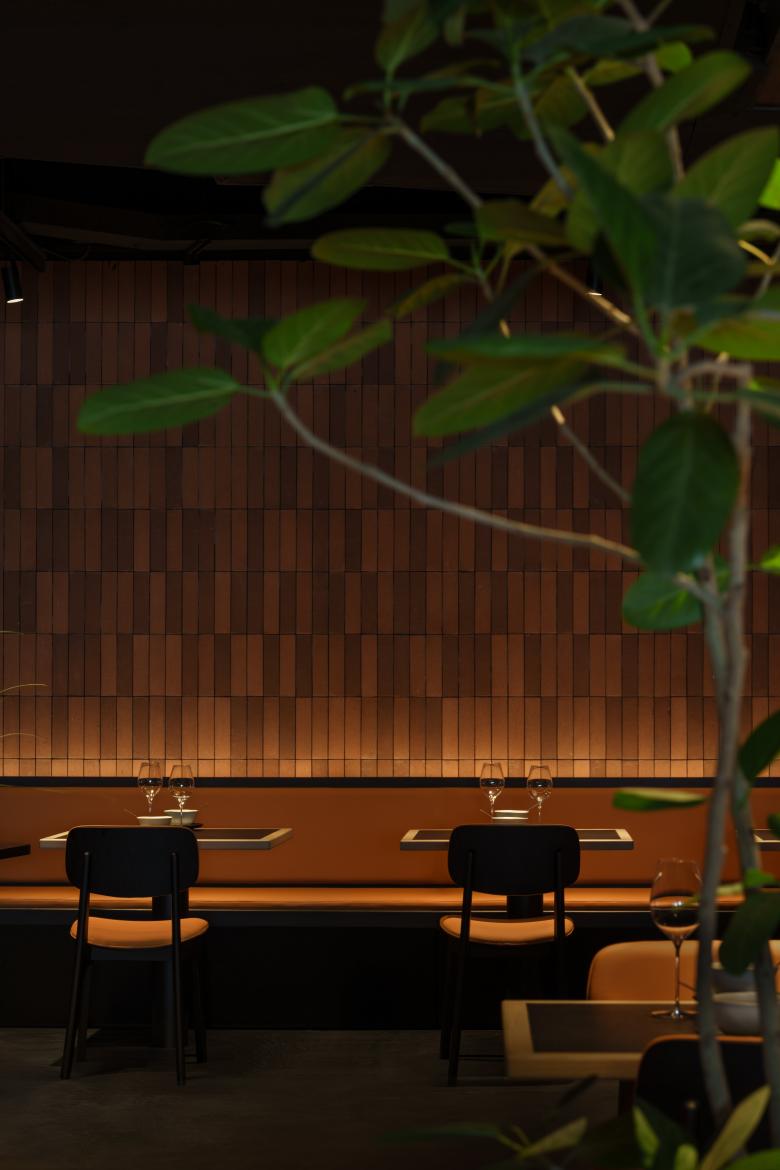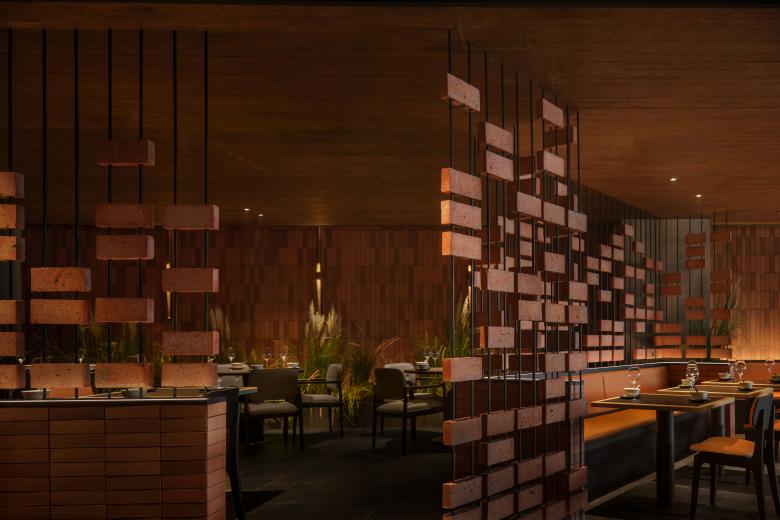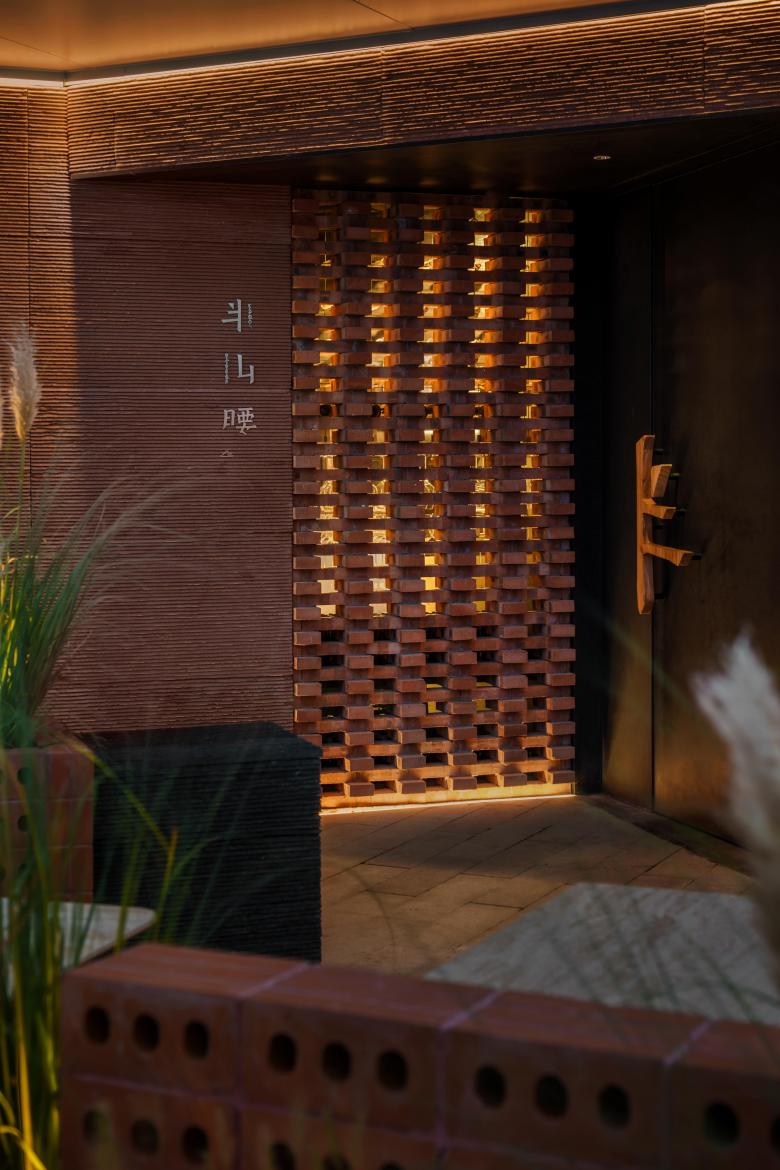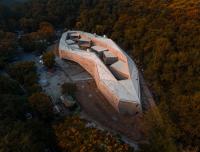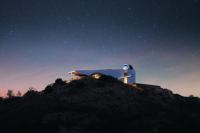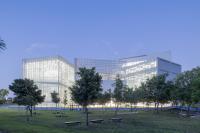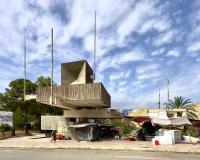Riverside Culinary Collection by Huangpu River
Shanghai, China
The project is the second restaurant of the Under Clouds dining brand in Shanghai, located at the West Bund Dream Center. The restaurant spans a total area of 548 square meters, situated along the banks of the Huangpu River, on the site of the former Shanghai Cement Plant, which was established in 1920 and was once the largest cement factory in Asia. From the restaurant, guests can view the riverside transport docks (Dream Dock), which were originally used for shipping cement from the Shanghai Cement Plant. Behind the West Bund Dream Center lies the rapidly developing Shanghai International Media Port. This former industrial heritage has been revitalized, transforming into a new landmark for urban commerce and cultural life.
From the cliff to the dock, we carry forward the "simplicity" of the mountain, using the strength of rammed earth, wood, stone, red bricks, and concrete to create a hospitable riverside. Every drop of water flowing upstream from the Jinsha River rushes toward the estuary of the Huangpu River. From Yunnan (the upper reaches of the Yangtze River) to Shanghai (the estuary of the Yangtze River), we inherit a rich legacy that merges the "abundance" of nature with culinary delights. As we trace our roots, we also move forward. This is our vision for the "Under Clouds" location at the West Bund Dream Center in Shanghai.
A Natural and Simple Connection
Along the riverside promenade, with the gentle breeze from the Huangpu River, the store is adjacent to the riverside transport docks, while also resonating with the nearby Qiantan CBD. From the outset of the design, we drew inspiration from the brand's story and the site's history, aiming to create a dialogue that transcends both time and distance. We sought to weave the cultural essence of Yunnan with the historical atmosphere of the West Bund in Shanghai, integrating the sounds of the waves into the dining experience, thus unveiling the "Under Clouds" restaurant at the West Bund Dream Center.
In terms of spatial design, we constructed a multi-layered space that conveys a sense of "abundance," breaking the boundaries between retail and dining areas to accommodate a variety of business forms. We defined a historical axis centered around the shipyard and a landscape axis that enhances the riverside experience. The historical axis connects the semi-private indoor areas, the cultural zone, and the old shipyard, facilitating a dialogue across time and space. This dialogue is based on the interplay of culture and cuisine (from Yunnan to the culinary collection in Shanghai), while the landscape axis visually connects the dining area with the riverside scenery.
In our material choices, we considered that Shanghai's essence lies in the stories of people behind the concrete jungle, while Yunnan embodies a state of coexistence with nature. At the "Dream Center," renovated from the old cement factory along the Huangpu River, we aim to construct a unique dining experience within a concrete box, using a language that blends natural and semi-industrial elements.
Through the industrial (local) interpretation of natural materials, we extracted two primary raw materials from both the cement factory and the Yunnan restaurant: cement and red earth. After processing in the factory, these materials yield concrete and red bricks, which serve as the main materials throughout the space. In the dining area, red bricks are predominant, complemented by concrete, while in the cultural zone, concrete takes precedence with red bricks as a secondary element. This reflects the theme of being "half-cooked," symbolizing that, like materials and ingredients, everything requires local processing—an analogy for the experience of Yunnan people living in a big city. Additionally, we incorporated various original natural materials and greenery in localized areas and soft furnishings.
For the outdoor space, we used concrete bricks, red bricks, and stones, with the landscape emphasizing the wild growth of nature, giving an untamed feel to the outdoors. The facade of the Under Clouds restaurant replaces the original floor-to-ceiling windows and dark green stone with "red concrete panels," making the restaurant stand out in the neighborhood with vitality. Touching the walls reveals the strength of natural materials; when sunlight hits the walls in the morning, the texture is enhanced by light and shadow, presenting different layers. At various times of the day, sunlight casts reflections of the landscape onto the walls, creating a dynamic interplay of light and shadow on the facade of the Under Clouds restaurant.
In the cultural zone, we predominantly used concrete with less red brick, combining it with weather-resistant steel for a touch of sophistication. As the first Under Clouds restaurant to introduce a cultural retail + dining concept, we designed the space to connect with the original dock, facilitating a dialogue across spatial and temporal dimensions. Consequently, the flow of space between the cultural retail area and the dining zone is rotated by 45 degrees. The cultural area, designed as an exhibition and sales space, features an open island bar, allowing every customer to engage in food preparation, while simultaneously learning about the brand and Yunnan, enriching the dining experience and adding warmth to the space.
Entrance Design of the Dining Area
The materials used in the main dining area include more red bricks with less concrete, combined with wooden furniture to create a cozy dining atmosphere. The dining area is divided into an outdoor open dining area, an indoor open dining area, and an indoor semi-private dining area. At the entrance, we created a modern communal table to transition between the cultural zone and the dining area. The communal feast is a common gathering form among the ethnic minority villages in Yunnan. Whenever there is an important ceremony or a need to entertain guests in the village, a communal feast is held, symbolizing the Under Clouds restaurant's appreciation for every guest.
As the open dining area transitions to the semi-private dining area, we used suspended red bricks to create partitions. The staggered arrangement of the hanging red bricks resembles dancing musical notes, infusing the dining space with dynamism and playfulness. It gives the entire environment a light and rhythmic ambiance. By raising the ceiling in certain areas, we created unique dining spaces that encourage visual interaction among guests. The ceiling features GRC wood-patterned concrete, designed as a "primitive wooden hut" using modern language. Landscape plants are arranged along the walls, using the scents of materials and ingredients to immerse diners in the rustic atmosphere of Yunnan.
The private dining rooms feature concrete floors and red earth walls. The use of red rammed earth returns to the essence of bricks, employing a technique of deconstruction, reorganization, and reconstruction to conclude the story of the "Under Clouds" restaurant at the West Bund Dream Center. The wooden ceiling and lighting create a relaxed atmosphere for group dining.
The lighting team has adjusted the "light environment" to suit different dining scenarios based on weather, time of day, and time of year. Whether it's for a formal meal, a leisurely afternoon tea, or a casual evening cocktail, diners can enjoy their experience in a comfortable atmosphere.
The Under Clouds brand, originating from Yunnan, promotes a lifestyle centered around authentic natural cuisine, providing a relaxing dining experience. The design team also consists of designers from Yunnan who have traveled the world and settled in the Yangtze River Delta region. We embody the "half-cooked" state of Yunnan ethnic minorities arriving in the big city, trying to bring the naive state of "mountain people" emerging from the depths of the mountains into this space. In contrast to the sophistication of other stores in the Dream Center, we have chosen a "semi-industrial" approach to highlight the "half-processed" state of the original and authentic culture in a highly developed city, aiming to construct a new culinary experience that blends urban and rural elements.
